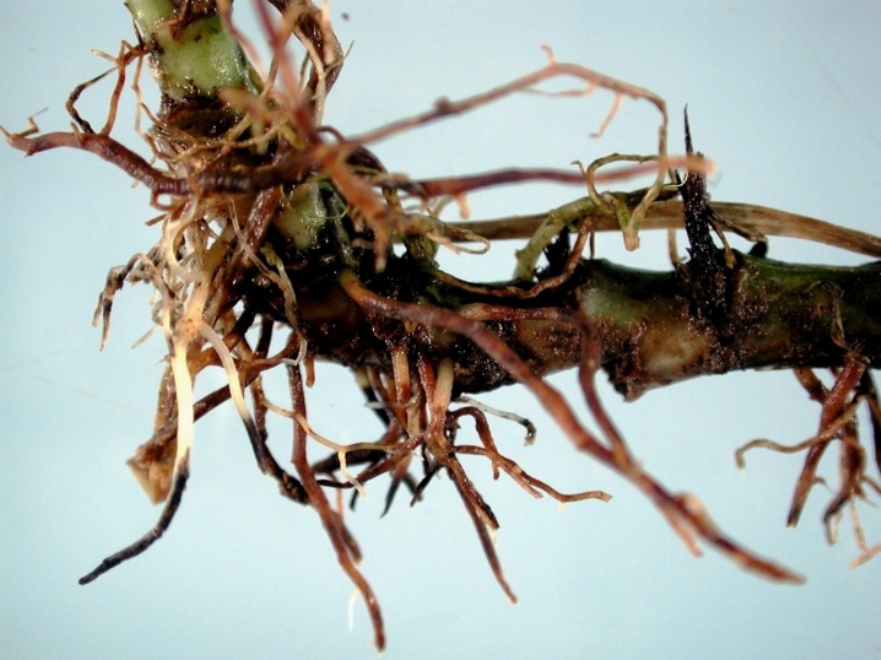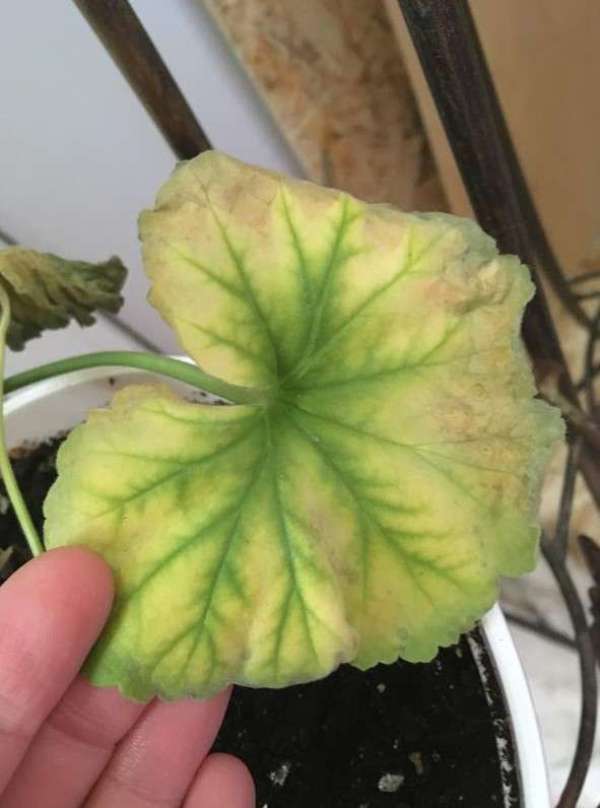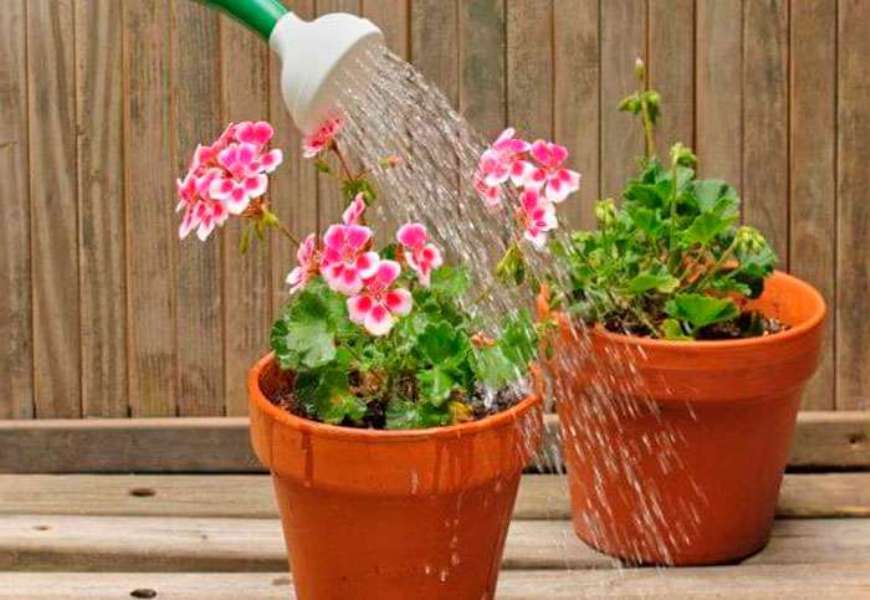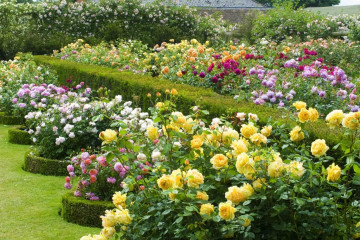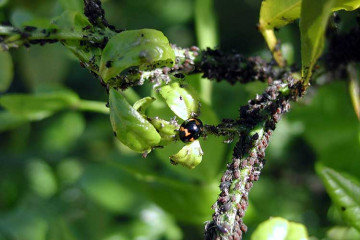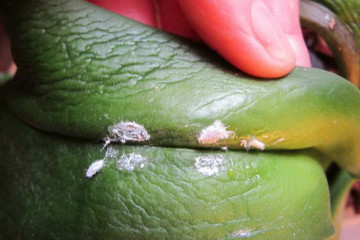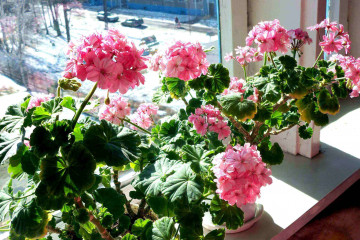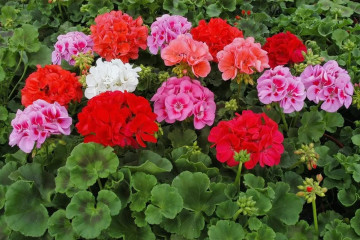Diseases of indoor and garden geranium - treatment and care
Content:
One of the most popular indoor plants is geranium. On the windowsills, you can see lush blooming specimens that are planted in the garden in summer and bloom there throughout the warm season. To preserve plantings, you need to know geranium diseases and how to treat them.
Diseases and pests of pelargonium
Geranium can bloom for a long time. Both outdoor and home conditions are good for her. Sometimes the plant not only stops blooming, but the foliage begins to curl, dry, turn black and fall off. This means that the flower is affected by pests or one of the inherent diseases of the species. It is worthwhile to be wary if small light spots, traces of rust, swelling appeared on the leaves of geranium, or it simply dropped the flower buds abruptly.
Growers are constantly researching plants to prevent pelargonium diseases and pest infestations. Most often, geranium is affected by the following types of diseases:
- bacterial;
- fungal;
- root rot;
- viral infections.
A weekly inspection of the leaves, flowers and stems will help to identify the problem in a timely manner and begin to fight it. Diseases of pelargonium on leaves are not the only reason leading to the death of flowers. The threat can also come from:
- black legs;
- lesions of phytophthora spores.
Mistakes in flower care lead to the following problems:
- Chlorosis. It is provoked by a lack or excess of iron, as well as other minerals and vitamins.
- Etiolation. It is associated with a lack of lighting.
- Eden. It is caused by constant waterlogging of the soil.
There are many geranium pests that can quickly destroy it. The main ones are:
- root worm;
- mealybug;
- spider mite;
- aphid;
- whitefly;
- caterpillar.
Modern drugs, which can be bought at any garden store, help to effectively fight these pests.
Improper plant care and its consequences
The flower has been familiar to our gardeners for a long time, but many mistakes are made when caring for it in the garden and at home. This provokes the development of diseases and other problems. Most often this is a lack of lighting, frequent watering and overfeeding with fertilizers. Effects:
- lack of flowering;
- the appearance of yellowness on the leaves;
- the development of fungal spores;
- drying of leaves, as well as their twisting and spotting.
Most often, diseases can be prevented by installing additional sources of lighting, reducing the level of watering, and treating them from possible pests. All these preventive measures will prevent the negative consequences of improper care.
The main diseases of geranium
Many people know pelargonium as a home flower that constantly blooms on windowsills, but there is also a garden type of these plants, which differs in the shape of the leaves and the size of the flowers. The home view is called ivy or ampelous. They are used to decorate balconies, verandas and windows of houses.Has a pleasant scent that is barely perceptible in the fresh air. The number of varieties of zonal pelargonium is large.
Due to its specific scent, it is widely used in the cosmetic industry. Aromatic oil is produced from the leaves. Plants require constant attention at any time of the year. Indeed, even during the dormant period, the possibility of infection with pathogenic microbes and various pests is quite large.
Yellowness on the leaves
This comes from a lack of oxygen in the room, the presence of constant drafts, overdrying or waterlogging of the soil, lack of nutrients and nitrogen. The size of the container in which the pelargonium grows is also of great importance. If it is narrow, then the root system does not develop enough and this does not allow normal growth of the above ground part of the plant. But if not only the leaves, but also other parts of the geranium. But if spots appeared on geranium leaves for no apparent reason, you can be sure that the roots are infected with rot, or a mealybug has appeared in there.
Lack of flowering
The reasons for this may be lack of lighting, low temperature, improper feeding, too large a pot, thickened plantings. But sometimes this happens as a result of damage to root rot or worms.
Withered leaves
These signs of pelargonium disease indicate that the ground is too wet, insufficient nutrients, or the development of fungal spores is taking place.
Fungus infection
The disease is detected when a brown or gray bloom is visible on the foliage. Subsequently, such plants wither, since the trunk cannot hold the dense branches.
Root rot
With such a lesion, the leaves of the plant begin to turn yellow and over time white spots appear on them, which after a while may turn black if the flower is not cured.
Leaf rust
Redness on the leaves, including ugly stains of a rusty color, indicates that the plant is infected with fungal spores, and only by timely treating the affected area with special preparations it can be saved from death.
Bacterial lesions
As a result of the vital activity of microbes, the surface of the leaves is covered with specific spots, blocking the access of sunlight. As a result, the leaves are taken out.
Viral diseases
The development of the stem stops and a brown-purple bloom begins to appear on the foliage in the form of large stains.
Spotting and swelling
Symptoms appear as blisters and spots on the foliage. A point first forms on the surface, and then bubbles with liquid form.
Plant parasites and pests
Mistakes in the care of geraniums weaken its protection from various pests.
Root worm
It appears in constantly moist soil and feeds on the roots of the plant. The condition for getting rid of this pest is to remove the infected part of the roots and treat the remaining segment with hot water. After drying, the rhizomes are sprinkled with wood ash and planted in another container.
Mealybug
Leaves, on which sticky white mucus appears, are infected with this pest. The parasite is removed by hand, after which it is sprayed several times with soapy water with a small amount of alcohol. Significant damage is treated with insecticidal formulations (Actellik, Fufanon and others).
Spider mite
If a spider mite appears on a geranium, it will suck out all the juices from the plant. The parasite is a carrier of gray mold and viruses. To get rid of the tick, the plant is removed from the soil and thoroughly washed with warm water or a strong tea broth is made. Wipe with a soft sponge. Then they are smeared with a thick solution of soap and, having been transplanted into a new pot, without washing off the protective layer, they are closed with a bag. For prophylaxis, all flower pots are disinfected whenever possible, as are pallets, window sills and even cracks in them.
Aphid
After the appearance of this pest, the leaves begin to curl, losing their shape and density. All of them are cut and burned.
Whitefly
Insects can be located on the back of the leaf. From this, the leaves can be twisted into a tube. They are easy to remove with Aktra.
Larvae of caterpillars
They literally make holes in the foliage, gnawing hundreds of holes in it. Senpai and Lipidocide preparations will get rid of parasites.
What to do in case of damage to a flower, how to treat
Diseases of indoor geranium and their treatment are exactly the same as in outdoor plants of this species. Help in case of infection is the same.
Aphids, whiteflies and spider mites appear on leaves when the air is too dry. Treatment consists of two stages:
- rinsing the plant under running water;
- insecticide treatment.
To understand why geranium leaves curl, you need to examine the plant. If the cause is aphid, immediately start treatment with special preparations (Fitomer or Mospilan). Parasites multiply rapidly and in just a couple of days they completely cover all its ground part.
Whiteflies generally choose varietal plants. They are removed along with the leaves on which the larvae are deposited. The rest is moistened with Aktara. Processing is carried out several times within two weeks.
They fight them with special drugs. The infected foliage is cut off and burned. An aspirin solution is used against termites. You need to spray it daily until the pest is completely destroyed. The smallest nadomada worms penetrate into the horses and completely destroy them. It is impossible to save such a plant. To protect the rest of the plantings, it is destroyed. Caterpillars are most often disturbed by street views, especially if there is a branchy tree nearby. The pest eats up almost all the leaves and this destroys the plant. The parasites can be harvested by hand and then the leaves can be treated with Senpai Protective Agent.
Geranium diseases should be fought when spots and yellow bloom form on the leaves. The method of treatment depends on the type of disease. It could be a black leg. At the same time, the stem darkens and begins to rot. To save the plant, a healthy cutting is plucked off and rooted in another pot. Gray rot is removed with Fundazol solution. All diseased parts are preliminarily cut and removed.
Late blight is a problem for many tuberous plants, but it is no less dangerous for flowers. In case of illness, treatment with Profit Gold or other disinfecting compounds is needed. Tool and pots are sterilized.
Flower care tips
Pelargonium care is simple. In order for the plantings to please the eye with lush flowering, it is necessary:
- maintain the optimal temperature in the room;
- ensure that the lighting is sufficient;
- control soil moisture;
- timely feed;
- regularly inspect the plantings;
- if necessary, treat and remove the affected parts of the plant;
- cleaning the soil where flowers grow from weeds.
Geranium bushes should be planted at a certain distance in order to provide air access and aeration of the soil.
Pelargonium from the Geraniev family is rightfully considered the most beautiful indoor plant. It grows well in the garden too. The flower is susceptible to diseases and pests. It is required to inspect the ground part of the bushes for spots and other defects that indicate disease. If problems are found, the fight begins immediately.

